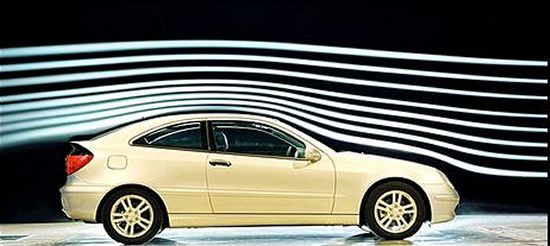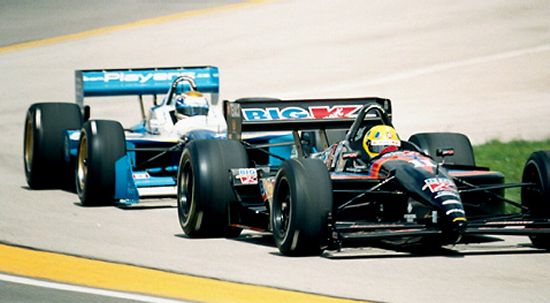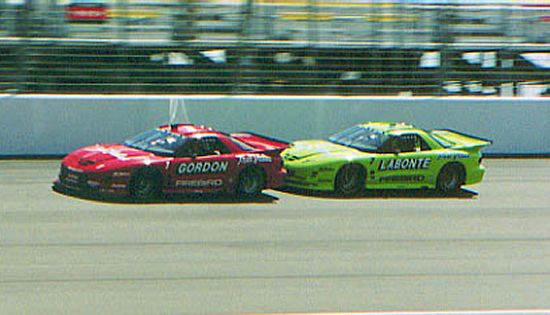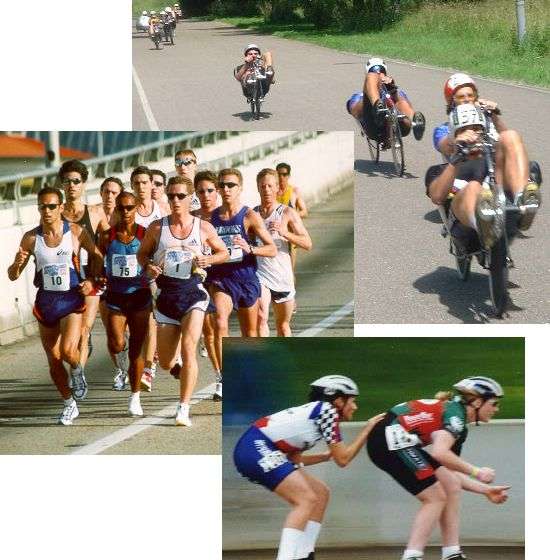|
||||||||||
|
|
||||||||||
|
||||||||||
|
|
||||||||||

This slipstream effect works in the following way. As a single car races around a track, it creates a "bubble" of high-density air in front of it and a bubble of low-density air behind. The difference in the pressure between these two air pockets creates drag, the force that impedes motion. This drag force limits the top speed the car can attain. But if a second car pulls up behind the first, the slipstreams created by the two merge so that the first car losses its aft bubble and the second car loses its front bubble. This effect reduces the drag force each car experiences and both are able to travel slightly faster.

Since racing organizations have imposed strict limits on car design and the use of new technologies in recent years, racing teams have been forced to scramble for every little advantage they can find. These new rules and the mutual benefits of drag reduction help explain why drafting has become so prevalent in modern auto racing. Drivers who remain in formation with each other have the ability to pull away from cars that aren't using the drafting effect, even if those cars might actually be faster in a one-on-one comparison. Another use of drafting occurs when a slower car pulls in behind a faster car and takes advantage of the first car's slipstream. This has the effect of helping the second car go faster while forcing the faster car to work harder thereby narrowing the performance gap between the two opponents.

But eventually, the second car needs to pass the first in order to make a run at the victory. Drafting can also assist in this effort if the second driver can take advantage of the "slingshot effect." By dropping back from the first car a little, the low-pressure bubble aft of the first car then "sucks" the second car forward. The second driver then gains a little more speed as he pulls out to the side to pass the first car. By the same token, the first car loses speed as the low-density bubble is fully reformed aft of his car. This technique was first used by NASCAR driver Junior Johnson who successfully employed drafting to win the 1960 Daytona 500 despite having a car 10 miles per hour slower than his competition.

However, drafting isn't limited to the world of motor sports alone. Runners, bicyclers, and inline skaters also
employ the technique, but in a slightly different way. While racecar drivers use drafting to increase their speed,
their non-motor sports counterparts emphasize reducing energy consumption. A runner utilizes drafting by following
closely behind an opponent. The opponent breaks the headwind and creates a slipstream in his wake where the second
runner can get by exerting less energy while still maintaining the same speed. In a marathon race, this technique
may save 5 to 10 seconds per mile.
- answer by Joe Yoon, 1 September 2002
Read More Articles:


|
Aircraft | Design | Ask Us | Shop | Search |

|
|
| About Us | Contact Us | Copyright © 1997-2023 | |||
|
|
|||